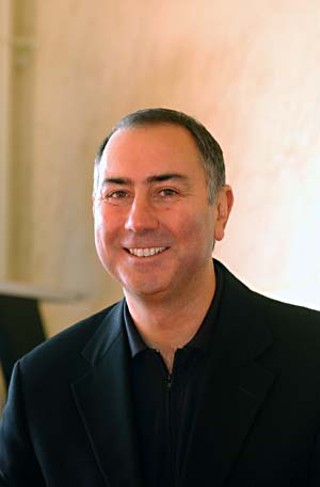Playing Through
Can soccer flourish in Austin? The Austin Aztex are about to find out.
By Thomas Hackett, Fri., Feb. 1, 2008

Can it happen here? As much as we hope so, we also don't want to get our hopes up only to see it die a dismal death.
I'm talking about soccer. Professional soccer. Right here in Austin. Last week a local businessman announced the formation of the Austin Aztex, which, starting in April 2009, will be playing in the United Soccer Leagues.
You'll be excused if you've never heard of the United Soccer Leagues. It's not Major League Soccer, whose teams sometimes get a little ink in the press and whose big games sometimes get broadcast on network television. It's a whole other league, with 11 First Division teams from Miami to Montreal, from Portland, Ore., to Puerto Rico.
Coming in under the radar may be the genius of the USL. Naturally, it would like the press, but initial hype of American soccer rarely translates into lasting league success. Anyone remember the National Professional Soccer League? How about the North American Soccer League? For a few months there, back in 1977, with Pelé playing for the New York Cosmos, there wasn't a bigger story in sports. Seven years later, with several teams failing to draw even a few thousand fans, the NASL was out of business.
Then there was the Women's United Soccer Association. In 1999, the U.S. national team had won the Women's World Cup in a sold-out championship game that ended with one of the most iconic images in all of sports: Brandi Chastain triumphantly tearing off her jersey. A few months later, Sports Illustrated named the women its athletes of the year. The first professional women's league began from that win; however, it lasted a mere three seasons, 2001-2003.
Phil Rawlins, the owner of the Aztex, is well aware of the dispiriting history of professional soccer. So are the league officials at USL. They know that Americans love playing soccer but, for whatever reason, don't much like watching it.
"We accept the skepticism – it's in every market," says Tim Holt, USL's vice president. "With others, there was this attitude that 'We've got a soccer league now, and we expect you to show up.' But that's not how it works. You've got to develop that connection. You've got to make it so fans feel that they're stakeholders in the league. It's about building relationships."
Holt and Rawlins aren't kidding themselves. They have no illusions about filling the more than 89,000 seats at Darrell K Royal-Texas Memorial Stadium or even playing there. The most successful franchise in the league, the Montreal Impact, has drawn upward of 11,000 fans. But the average attendance throughout the league is an entirely doable 4,774. The trick, says Rawlins, is to make those few thousand fans feel like a crowd, a focused gathering, and not just a bunch of random people sprinkling an otherwise empty stadium.
It's also important to remember that sports leagues don't happen overnight. The runup can take decades. This weekend, millions of people will watch the Super Bowl. It wasn't always so, however. Until the 1960s, hardly anyone gave a damn about professional football. Johnny Unitas, maybe the best quarterback ever, started off making $6 a game. And then, bam! Just like that, football took off.
So who knows?








